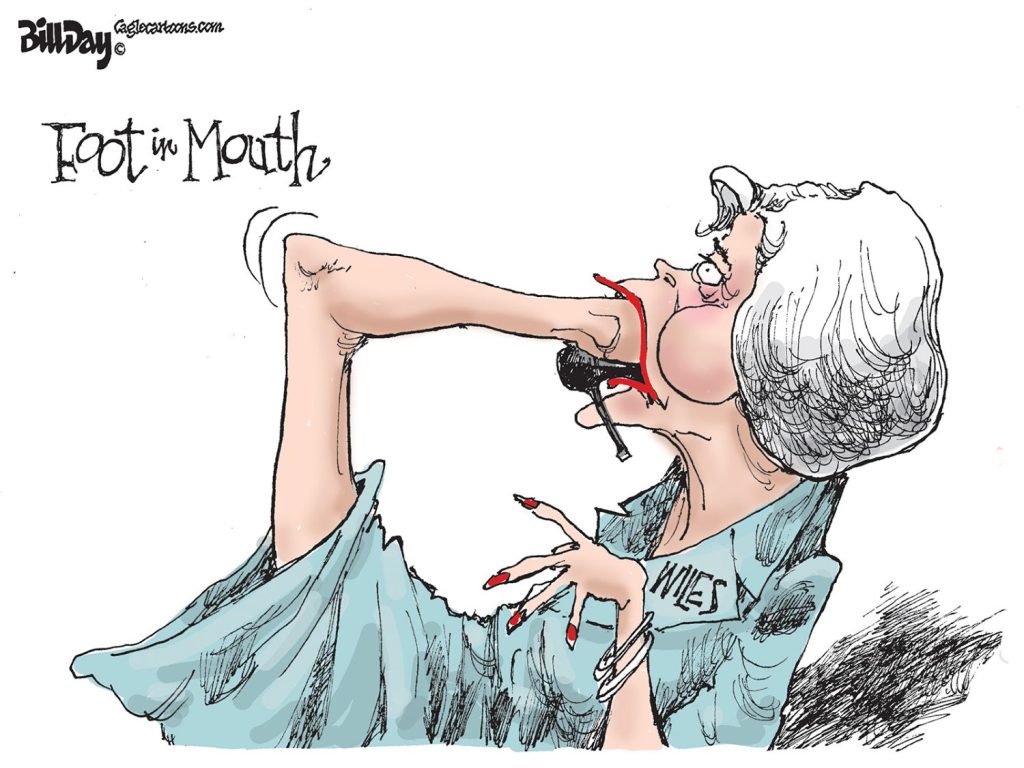While we seem to be unenthusiastically backing into choosing a mayor for Memphis for the next four years, Nashville is saying farewell to one who showed what a highly effective, highly engaged mayor can accomplish.
From his election in 1999 until his last day in office a couple of weeks ago, Mayor Bill Purcell – a former member of the Tennessee House of Representatives – exceeded expectations with his coherent, clear vision of his administration, his bold plans to improve quality of life in his city and his relentless pursuit of public facilities whose design would say volumes about the kind of city Nashville aspired to be.
There was little in Mayor Purcell’s background that would have led observers to predict that he would become one of the best mayors in the U.S. He was a competent representative known largely for balancing the practical and the political and for his ability to take positions and solve problems that created a minimum of adversaries.
Athenian Of The South
And yet, freed from the limited role of legislator and ushered into the decision-making role of administrator, he flourished into an effective communicator and unusually adept manager of the consolidated government in Nashville/Davidson County. Along the way, he continued the kind of moderate political leadership – notable for its conservative fiscal policies and liberal social programs – that has been a competitive advantage for Nashville for the past three decades, dating back to at least former Mayor Richard Fulton’s terms in office..
Nashville not only has outperformed Memphis in all indicators, but it has ranked among the top-tier cities for the nation. From a position as Tennessee’s Second City, Nashville moved beyond Memphis in population, economic growth, and promise, and has never looked back.
And while Nashville was establishing itself as one of the South’s leading cities – often paired with Charlotte as success stories for cities that transformed themselves – this momentum only quickened with Mr. Purcell in the mayor’s office.
Graphic Differences
To give an idea of the dichotomy between Nashville and Memphis, consider just a few indicators for the period from 2000-2005:
* Population growth in Nashville was almost twice Memphis.
* The number of immigrants attracted to Nashville was 50 percent higher.
* The percentage of families headed by single parents in Nashville was about one-third less than Memphis.
* The median household income was roughly 10 percent more in Nashville, and it was growing at a 6.3 percent rate, compared to 3.8 percent in Memphis.
* The poverty rate in Nashville was 40 percent less than Memphis, and so was the percentage of subprime loans as part of the total number of refinance loans.
* The percent increase in jobs in Nashville was 3.8, compared to .03 in Memphis. The Nashville unemployment was 25 percent less.
* Nashville had 30 percent more firms owned by African-Americans and 35 percent more women-owned firms.
* The crime rate in Nashville was 36 percent lower than Memphis, and the per capital spending for local government was 25 percent lower in Nashville than Memphis.
The Politics Of Bold Ambition
Well, you get the picture. In other words, recent years have been kind to Nashville while Memphis has grappled to decide what kind of city that it wants to be and pursues a number of unexciting strategies to claim its place in the global economy.
Some credit Nashville’s burst of success to the power of consolidated government, but the truth is that it’s all about leadership, not structure. And Nashville put together a string of leaders with one foot in the business community and one foot in politics. Most of all, Nashville business leaders drove a stake in the ground, saying what they demanded from their hometown leaders and then put their money where their mouths were. As a result, in Nashville, there is the feeling that they can do anything and that they have to because they are a big league city.
In some respects, it replicated the story of Atlanta, where strong corporate leadership and an engrained sense of civic commitment catapulted it from a sleepy Georgia city steeped in Confederate tradition to an economic dynamo that sucks up much of the young talent – especially African-American – in the Southeast today and gauges its success on international terms.
Quality
Back to Mr. Purcell, he embodied the qualities that Nashvillians have come to demand from their mayors, and he led spectacular economic growth – resulting in Nashville being dubbed the “hottest city” by economic development journals two years in a row – and he did it without giving away the store.
While our community granted 415 tax freezes to convince businesses to come here, Nashville handed out five. It was in refusing to sell their community on the cheap that Nashville set out to create a serious plan for improving the quality of the city. In addition, while Memphis sent the message that we were so unworthy that we had to bribe companies to come here, Nashville took the position that it was so special that companies were lucky to be part of it.
It was this air of success and destiny that always seem to be communicated best by Mayor Purcell.
Current Of Change
The most dramatic evidence of his success was seen last year when he was named Public Official of the Year by Governing magazine and Public Leadership in the Arts presented by Americans for the Arts. While former Nashville Mayor Phil Bredesen was noteworthy in his big project approach, his successor focused on quality of life. He expanded greenways, kicked off a park expansion program, enacted a “percent for art” program, led construction of a new first-rate symphony hall and remarkably (while city and county governments here were eliminating all funding for the arts) increased city funding to Nashville arts organizations by 61 percent.
Meanwhile, inside city government, Mayor Purcell implemented performance audits that greased the exit of old-time, well-connected employees and dynamited the good-old-boy network that hampered innovation in City Hall. Along the way, the audits also turned up tens of millions of dollars in savings that came from efficiencies in systems and programs.
The savings could not have come at a better time, because Mayor Purcell increased school funding $200 million during his terms and for the first time provided yearly capital funding so the school district could plan more efficiently for new schools.
Legacy
And most impressive of all, he did it all with only two property tax increases, resulting in a combined tax rate significantly less – about $2.00 – than the amount paid by Memphians who receive a lower level of public services in return.
Some critics in the tourism industry complain that he moved too slowly to replace the aged convention center, and although the $500 million project is probably going to break ground in the near future, we don’t fault him for being slow to get into the “arms race” between cities’ convention center facilities, which on balance deliver extremely poor returns on their massive investments.
It’s a remarkable legacy that Mayor Purcell leaves for his former legal director, Karl Dean, who took the oath of office a couple of weeks ago. While there is much that Purcell supporters (he leaves with a 60 percent approval rating) can point to with pride, what is most impressive is the amount of change and innovation that he was able to bring to Nashville in only eight years.
Term Limits
There are many things to be learned from his style of leadership and his singular focus to his agenda. His advice as he wrapped up the last 22 months of his Administration: Nashville should enact term limits.
“I have a sense of what you can accomplish. I think two terms keeps (mayors) focused, keeps the people that work with them focused and gives them the reality and the belief that they must and can finish in those two terms.”
Perhaps, when we compare Memphis and Nashville, there’s no more important lesson than this one.



